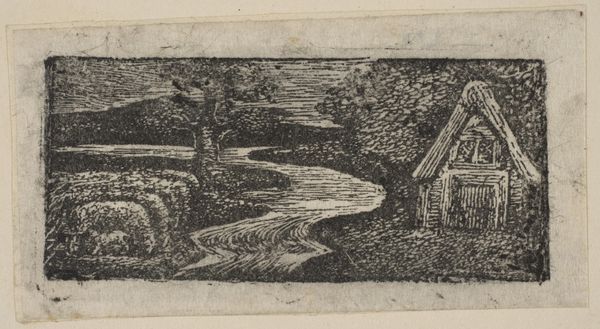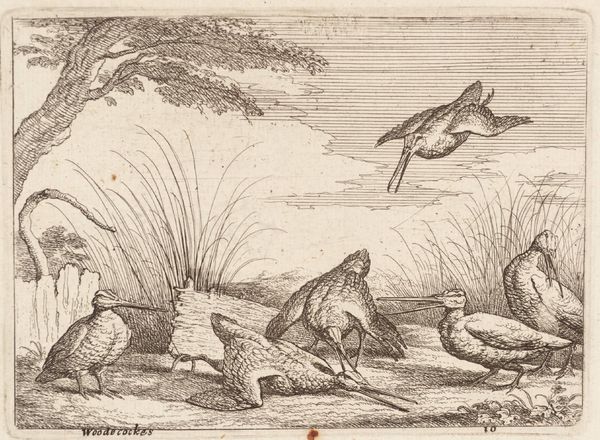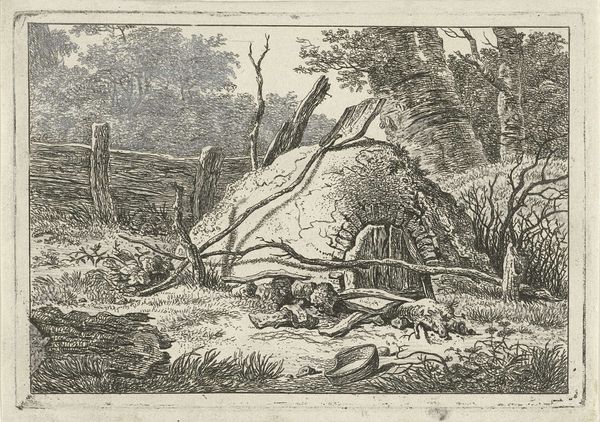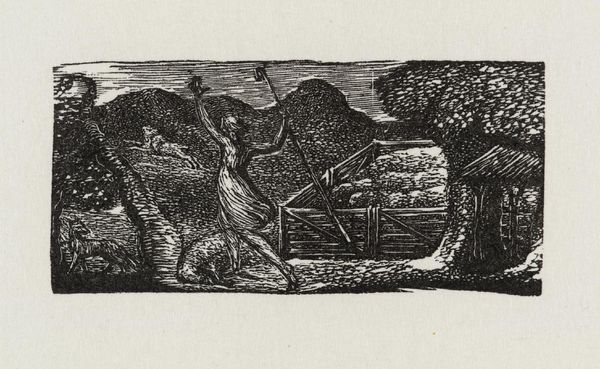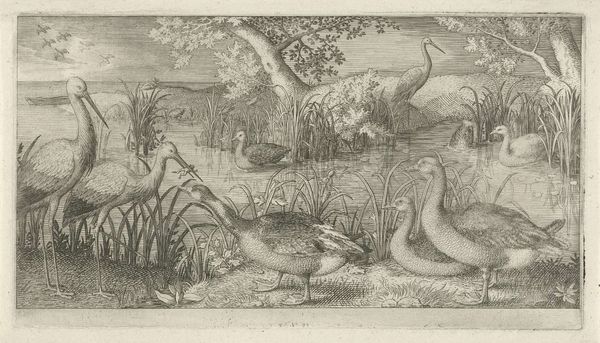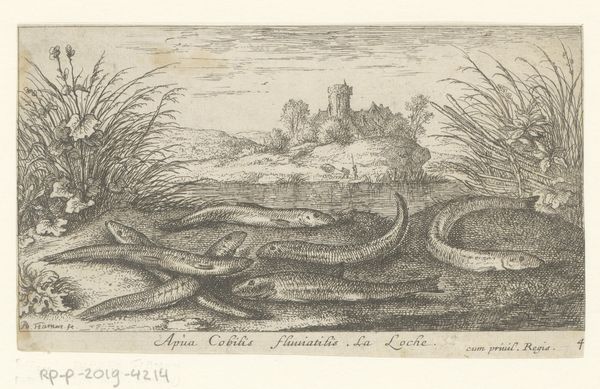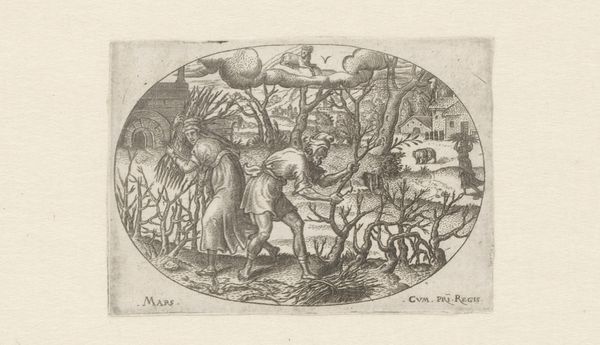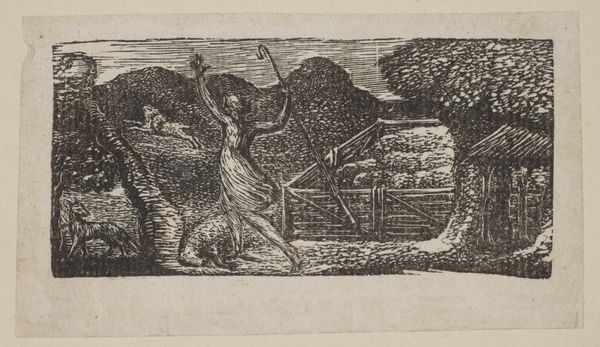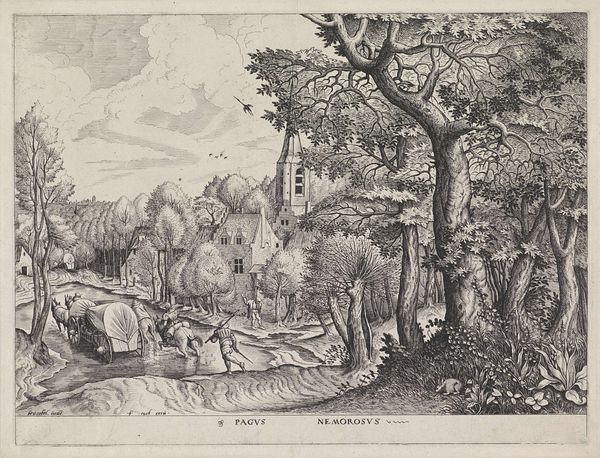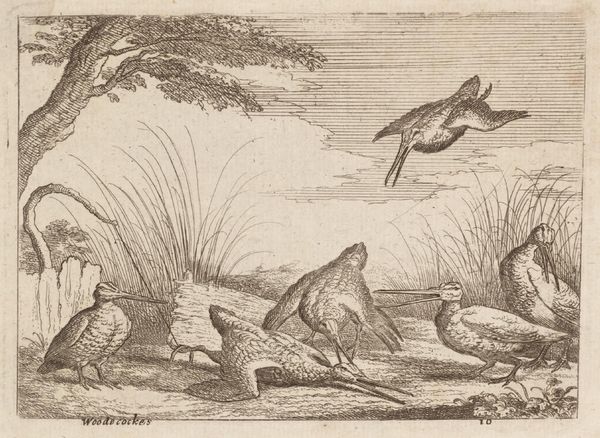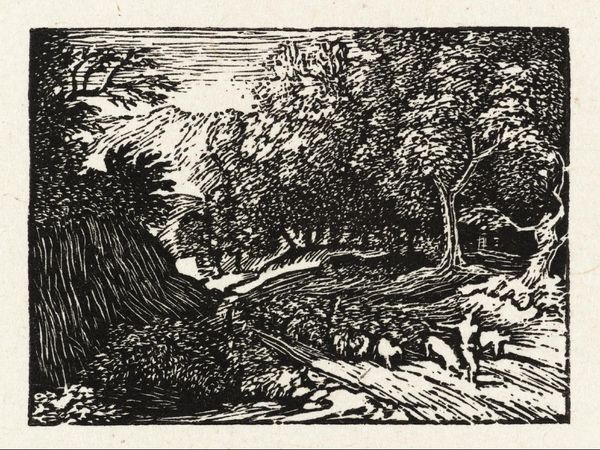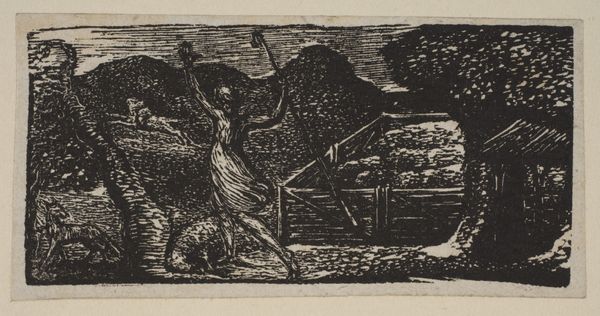
print, woodcut
# print
#
landscape
#
romanticism
#
woodcut
#
line
Dimensions: 1 1/4 × 2 15/16 in. (3.18 × 7.46 cm) (image)1 9/16 × 3 1/2 in. (3.97 × 8.89 cm) (sheet)
Copyright: Public Domain
Curator: What a darkly evocative little woodcut. It feels like peering into a lost world. Editor: This is "Colinet- Unhappy Hour," a print produced by William Blake around 1821, currently held at the Minneapolis Institute of Art. The Romantic aesthetic really shines through. Blake’s stark lines describe a secluded landscape and a solitary building nestled beside a stream. Curator: "Unhappy Hour"— the title itself casts such a melancholic light. The heavy lines create a mood of oppressive stillness, broken only by the frenetic scratching in the stream. And there's that peculiar, almost menacing little hut on the right. Editor: It’s interesting to consider the symbolism. Water, especially in Romanticism, often represents the flux of life, emotion, or even cleansing. Yet, here, that rigid linear style suggests a stifled quality. The stream appears trapped, mirroring perhaps the unhappy nature of the depicted hour. And the hut could signify both shelter and confinement, a refuge that might equally be a prison. Curator: You’re spot-on about that stifled quality. I also see it in terms of Blake's own socio-political context. Romanticism, at the time, reacted against industrialization and societal norms. This seemingly idyllic, almost medieval scene, could be viewed as Blake’s commentary on the increasing pressures of the modern world – a lament for a simpler, lost past. A retreat that remains overshadowed, nonetheless, by something oppressive. Editor: The deliberate crudeness of the woodcut medium reinforces that idea. Compared to the smooth refinement possible in engraving, the rough-hewn texture suggests a world untouched, or perhaps even deliberately distanced, from the polish of civilization. The hut seems to emerge directly from nature itself. Curator: Precisely! And that makes its somewhat ominous presence all the more striking. It is also so small. Does it make one wonder about power dynamics at play here in 1821. In his romantic idealizing and social critiques. It evokes questions more than it answers. Editor: Indeed. And I'd say that's part of its lasting power. It lingers in the mind, raising endless questions about what makes this hour – and this place – so fundamentally unhappy. It is interesting that "hour" does not include "s". It suggests that the unhappy is constant. Curator: An evocative glimpse into Blake's vision of an age in turmoil—still resonates powerfully two centuries later.
Comments
No comments
Be the first to comment and join the conversation on the ultimate creative platform.
